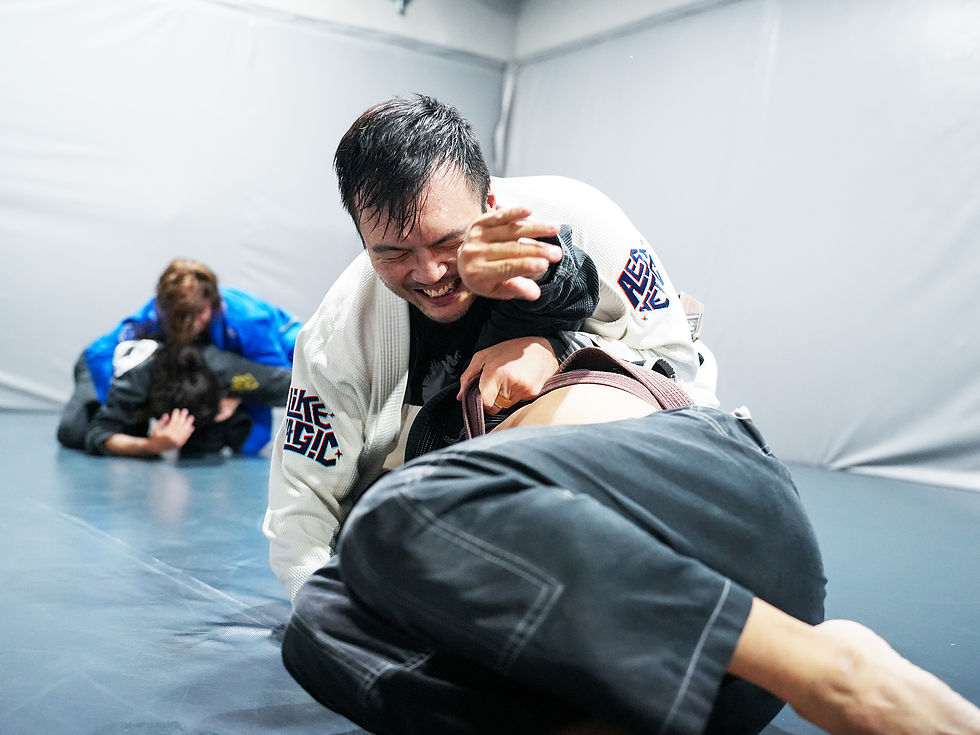Gi vs. No-Gi: Which Is Right for You?
- impactmma
- Jan 6
- 3 min read
Updated: Feb 20
When stepping into the world of Brazilian Jiu-Jitsu (BJJ), one of the first questions practitioners face is whether to focus on Gi or No-Gi training. Both styles offer unique challenges, benefits, and techniques. Choosing between them depends on your goals, personal preferences, and how you want to develop your grappling game. Let’s break down the differences to help you decide which is right for you.

What Is Gi Training?
Gi training involves wearing the traditional uniform, consisting of a jacket, pants, and belt. The Gi allows practitioners to grab and use the fabric to control their opponent, execute submissions, and create leverage. Techniques like collar chokes and sleeve grips are staples of Gi grappling.
Advantages of Gi Training:
More Control: The Gi’s fabric allows for a variety of grips that create more control over your opponent.
Technical Focus: The slower pace and grip-based techniques encourage precision and strategic thinking.
Expanded Technique Arsenal: The Gi opens up a wider range of submissions and positional controls, such as lapel chokes and spider guard.
Transferable Skills: Training with the Gi can translate well into No-Gi since it refines your fundamentals.
Challenges of Gi Training:
Slower Pace: Matches often progress more methodically due to the grip control.
Grip Dependence: Some Gi-specific techniques are not usable in No-Gi or real-world scenarios.
What Is No-Gi Training?
No-Gi training is done without the traditional uniform. Practitioners typically wear a rash guard and shorts, focusing on techniques that don’t rely on clothing grips. This style is faster-paced and emphasizes explosive movement and body control.
Advantages of No-Gi Training:
Realism: No-Gi techniques are more applicable in MMA and self-defense situations since they don’t rely on clothing.
Athletic Development: The faster pace and reliance on physical control improve agility, strength, and cardio.
Simplified Gripping: Without the Gi, grips are limited to controlling the body, making techniques more streamlined.
Crossover Potential: No-Gi aligns closely with wrestling and submission grappling competitions like ADCC.
Challenges of No-Gi Training:
Limited Grips: Without fabric to hold onto, controlling an opponent can be more difficult.
Faster Pace: The speed and intensity of No-Gi can feel overwhelming to beginners.
Key Differences Between Gi and No-Gi
Aspect | Gi | No-Gi |
Clothing | Traditional Gi with jacket and pants | Rash guard and shorts |
Grips | Fabric-based (collar, sleeve, pants) | Body-based (neck, wrists, ankles) |
Pace | Slower, more methodical | Faster, more dynamic |
Techniques | Wider variety with fabric grips | Streamlined, clothing-independent |
Real-World Use | Less applicable without a Gi | More applicable in MMA/self-defense |
Which One Should You Choose?
The choice between Gi and No-Gi ultimately depends on your goals:
For Beginners: Starting with the Gi can help you build a solid technical foundation and improve your grip strength and control. However, if your goal is to compete in MMA or focus on self-defense, No-Gi might be a better starting point.
For Competitors: If you aim to compete in IBJJF tournaments, Gi training is essential. For grapplers targeting submission-only or ADCC-style events, No-Gi is the way to go.
For Well-Rounded Development: Many practitioners benefit from training both styles. Gi helps sharpen technique and patience, while No-Gi enhances speed and athleticism.
Conclusion
Both Gi and No-Gi offer incredible benefits and unique challenges. There’s no definitive "better" style; it’s about what aligns with your goals and preferences. The best path? Train both and enjoy the diversity that Brazilian Jiu-Jitsu has to offer. Regardless of your choice, consistent practice and an open mind will ensure growth on and off the mats.
Book a BJJ Trial class today and find out which training you prefer!






Comments